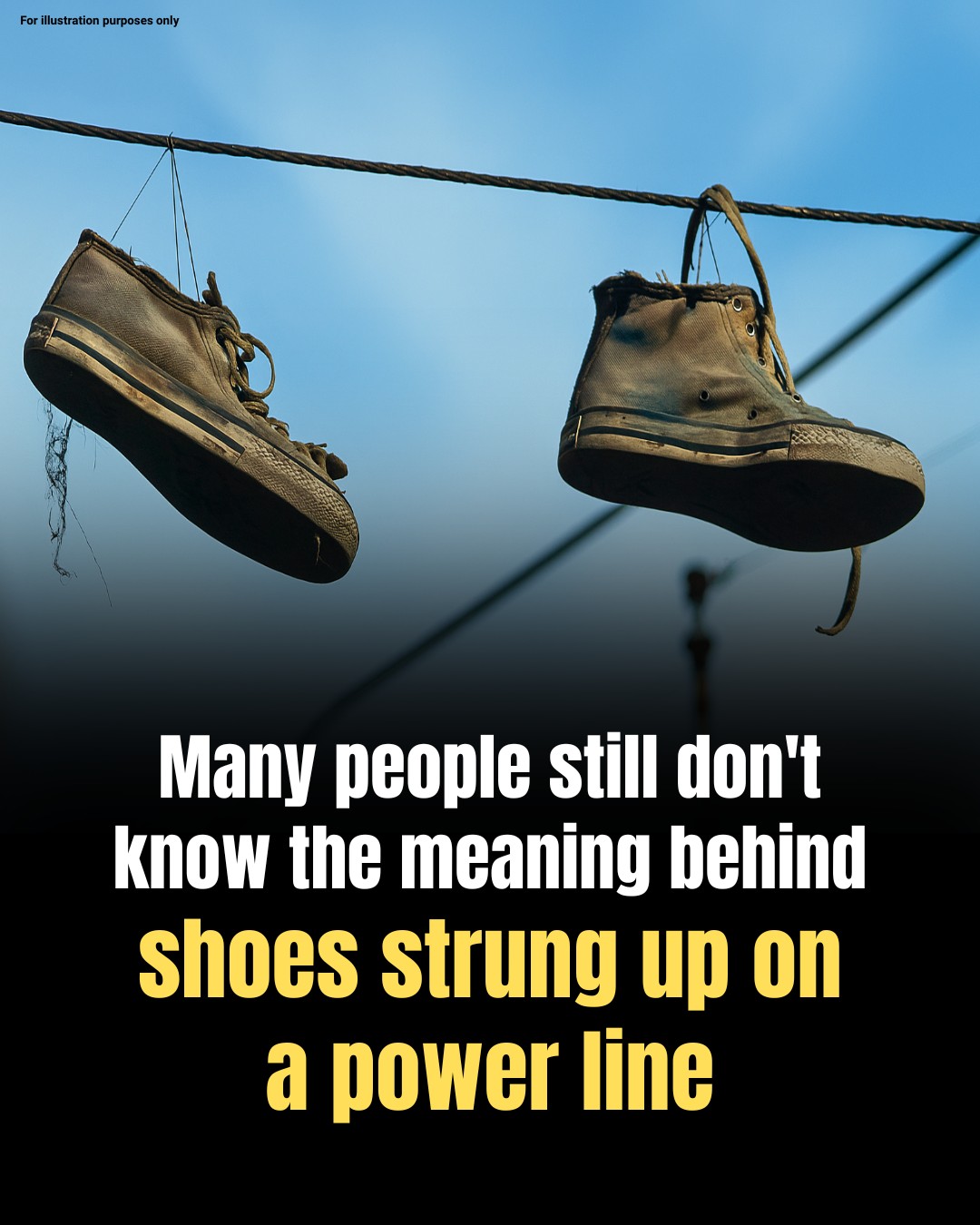Shoes Hanging on Power Lines? You’ve probably seen it at least once—two sneakers tied together by their laces, dangling from a power line like a strange, suspended sculpture. At first glance, it might seem random or silly, maybe even a prank gone too far. I used to think the same. I figured some kids got bored or mischievous and thought it would be funny to throw their shoes up in the air and see if they’d catch on the wire.
Shoes Hanging on Power Lines?
But the more I noticed them, the more I wondered—was there something deeper behind this strange ritual? Could those shoes tell a story?
As it turns out, there are many theories behind this curious phenomenon. Some are innocent and rooted in tradition, while others venture into the realm of rumor, urban legend, or even fear. The truth might not be as dark as some imagine—but the possibilities make for a fascinating glimpse into culture, symbolism, and the way communities pass down rituals, even if their original meaning is lost.
From the Barracks to the Wires
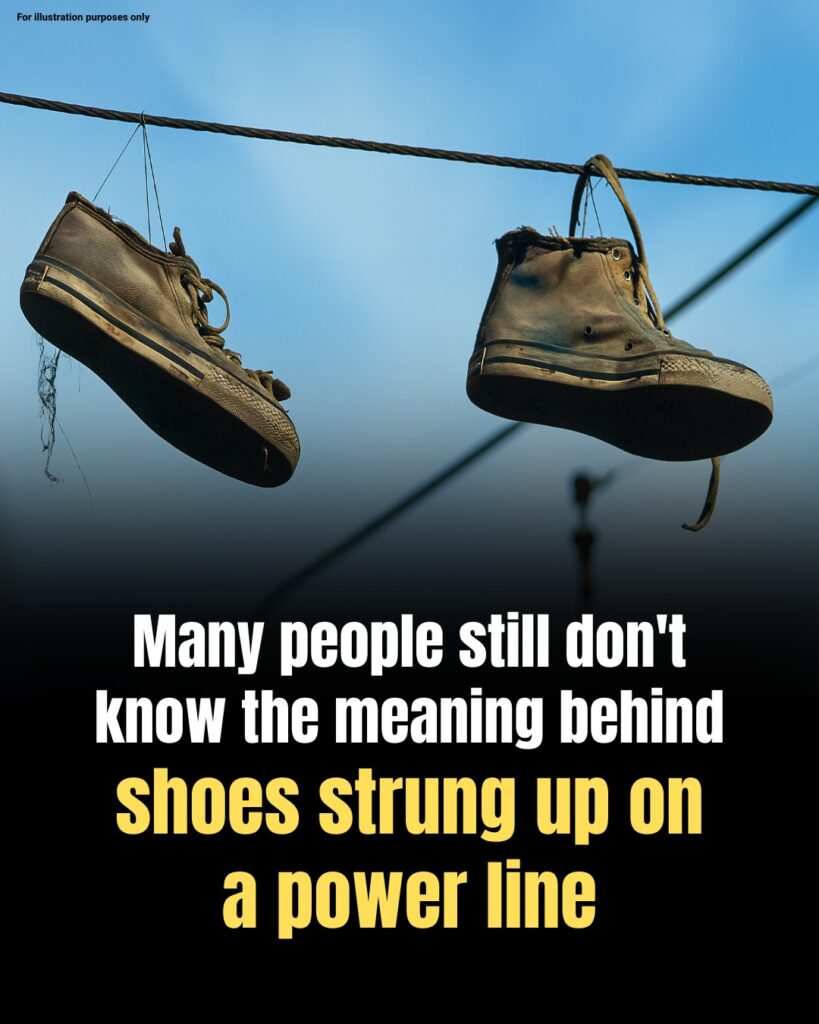
One of the more historically grounded theories dates back to military traditions. Some say that soldiers would toss their boots over power lines after completing basic training or being discharged from service. It was a symbolic way to mark the end of a difficult chapter—a gesture of celebration and freedom. These boots, often worn and battered from months of marching, stood as trophies in the sky, displayed like flags of perseverance. In this version, the shoes tell a story of struggle, growth, and transformation.
It’s easy to see how such a tradition, born in the brotherhood of the military, could find its way into civilian life. People find comfort in rituals. We replicate what we see, even if we don’t fully understand why. Perhaps someone witnessed a soldier’s farewell gesture and decided to recreate it in their own neighborhood—consciously or not. Over time, the action lost its context and became something else entirely.
The Darker Theories
Of course, no discussion of shoes on power lines would be complete without addressing some of the more ominous explanations. One theory, often repeated in urban settings, claims that shoes hanging from wires indicate gang territory. Some believe they mark a location where drugs are sold. Others associate the sight with memorials for the deceased—either marking the place where someone died or symbolizing a lost life.
While these explanations circulate widely, there’s little hard evidence to support them as a widespread practice. Law enforcement agencies across the U.S. have generally dismissed the notion that these shoes serve as coded gang communication. Nonetheless, the theories persist, fueled in part by popular media and the internet’s tendency to turn speculation into pseudo-fact.
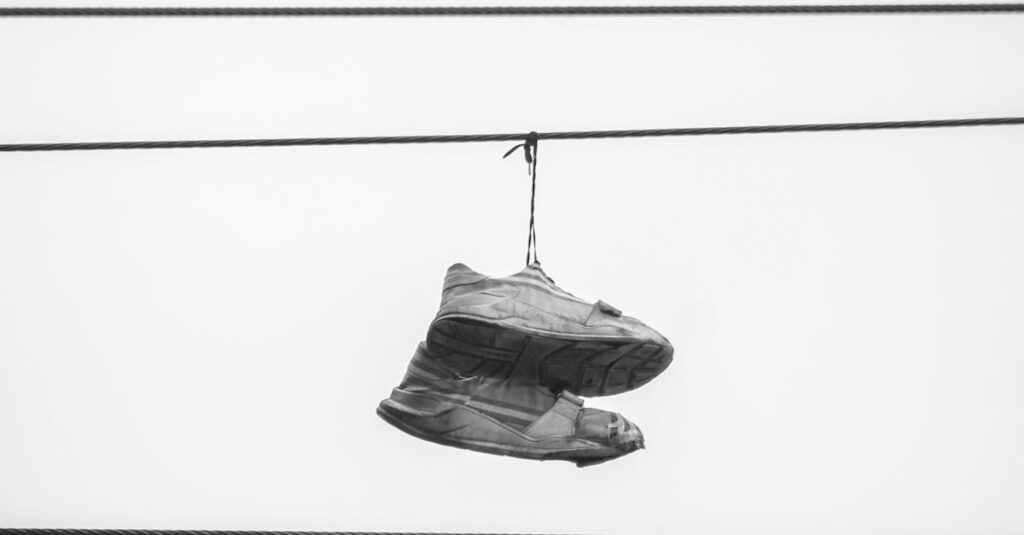
In some cases, shoes have indeed been used as makeshift memorials, particularly in communities affected by violence or tragedy. But this usage is often more symbolic and specific—more often shoes placed on fences, hung on trees, or laid out at the scene of an event. The image of sneakers high above the street feels disconnected and inaccessible, making it a less practical choice for a heartfelt tribute.
Schoolyard Pranks and Playground Cruelty
Another widely held belief is that the shoes-on-wires motif originates in childhood—and not the happy kind. If you’ve watched enough coming-of-age films, you’ve probably seen the trope: a kid gets bullied, his shoes are stolen, and as a final insult, the bullies fling them where he can’t reach them.
This interpretation, while cruel, has a kind of logic. Bullies often thrive on public humiliation, and what better way to embarrass someone than to remove an essential item and make its loss visible to the entire neighborhood? In this context, the shoes become a symbol of helplessness or social exclusion.
Still, while this may account for some cases, it doesn’t explain the sheer volume of shoes found dangling across power lines around the world. Surely not every pair is the result of teasing gone too far.
Harmless Fun and Tradition
Which brings us to the most popular—and likely most accurate—theory: people just do it for fun. Maybe they’re bored teenagers daring each other after school, or college students celebrating the end of finals. Maybe someone just bought new shoes and decided to send the old pair off with a dramatic flair. Maybe it’s just a form of rebellious expression that doesn’t hurt anyone, an act of spontaneity in a world full of structure and routine.
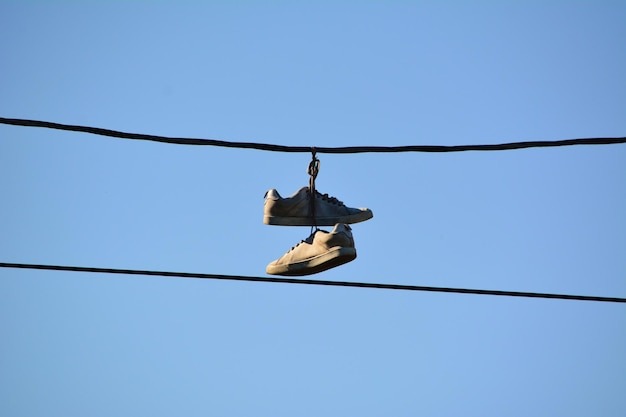
The beauty of this explanation is that it requires no complex backstory. No symbolism. Just human nature—our tendency to leave our mark, to entertain ourselves, and to contribute to a tradition simply because it’s fun and a little bit mischievous. It’s the same impulse that leads people to carve initials into tree bark, paint graffiti, or leave love locks on bridges. A way to say: I was here.
The Social Echo
What’s most fascinating is how these various motivations intertwine. Someone might see shoes on a wire and feel inspired to throw their own pair, without ever knowing the backstory. It becomes a social echo—a gesture repeated because it feels familiar, cool, or strangely important. And so, the shoes keep appearing.
That’s how cultural symbols are born and spread—not always through intention, but through repetition and reinterpretation. What began as a military send-off might evolve into a high school graduation prank. A bullying incident might later be misinterpreted as a gang symbol. A simple act of boredom can spiral into an urban myth.
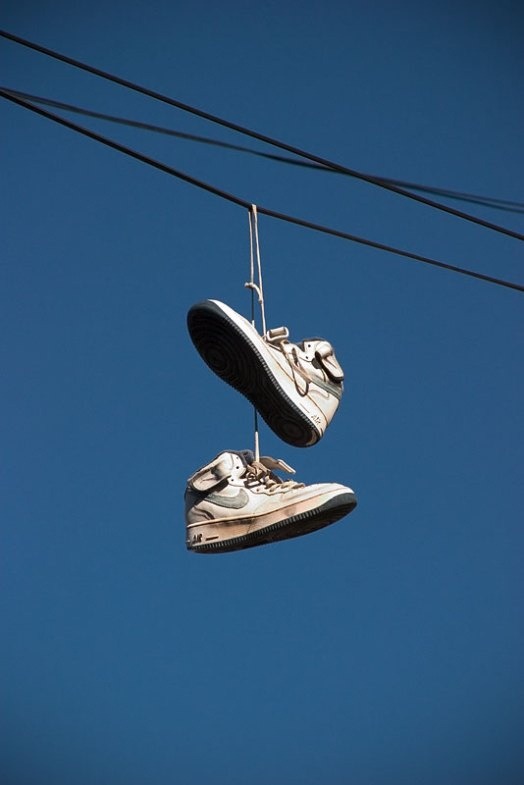
And that’s the real story behind the shoes: not any one theory, but a tapestry of small stories, gestures, and meanings. A neighborhood becomes a canvas, and these airborne sneakers, with their swaying laces and silhouetted soles, become a kind of accidental street art—symbols open to interpretation.
Final Thoughts
So the next time you see a pair of shoes dangling from a power line, stop for a moment. Don’t jump to conclusions. Instead, consider the layers of meaning that might be hanging there. Maybe they’re a farewell from someone moving away. Maybe they’re a badge of honor, or the remnants of a teenage dare. Maybe they’re just a random act that, like so many things in life, means little at first glance—but much more when you look closer.
Whatever the reason, those shoes tell a story—even if the truth is suspended somewhere between myth and memory.

